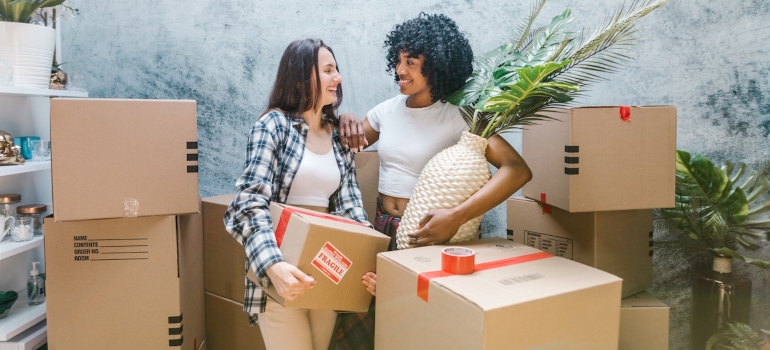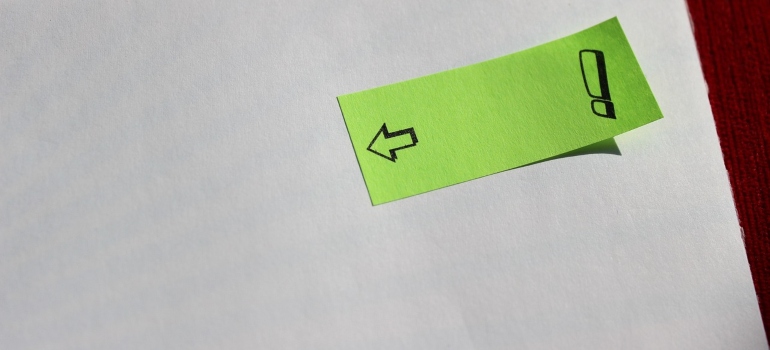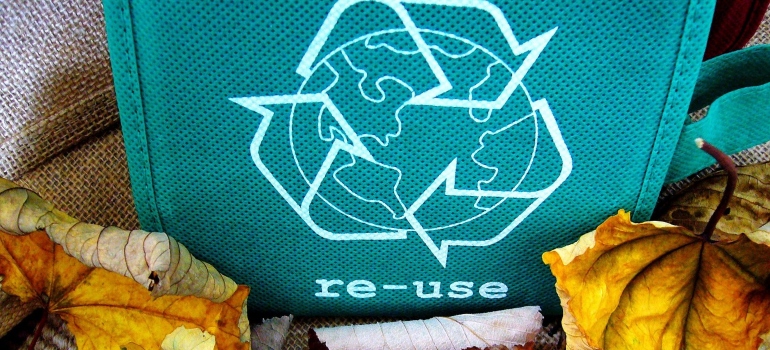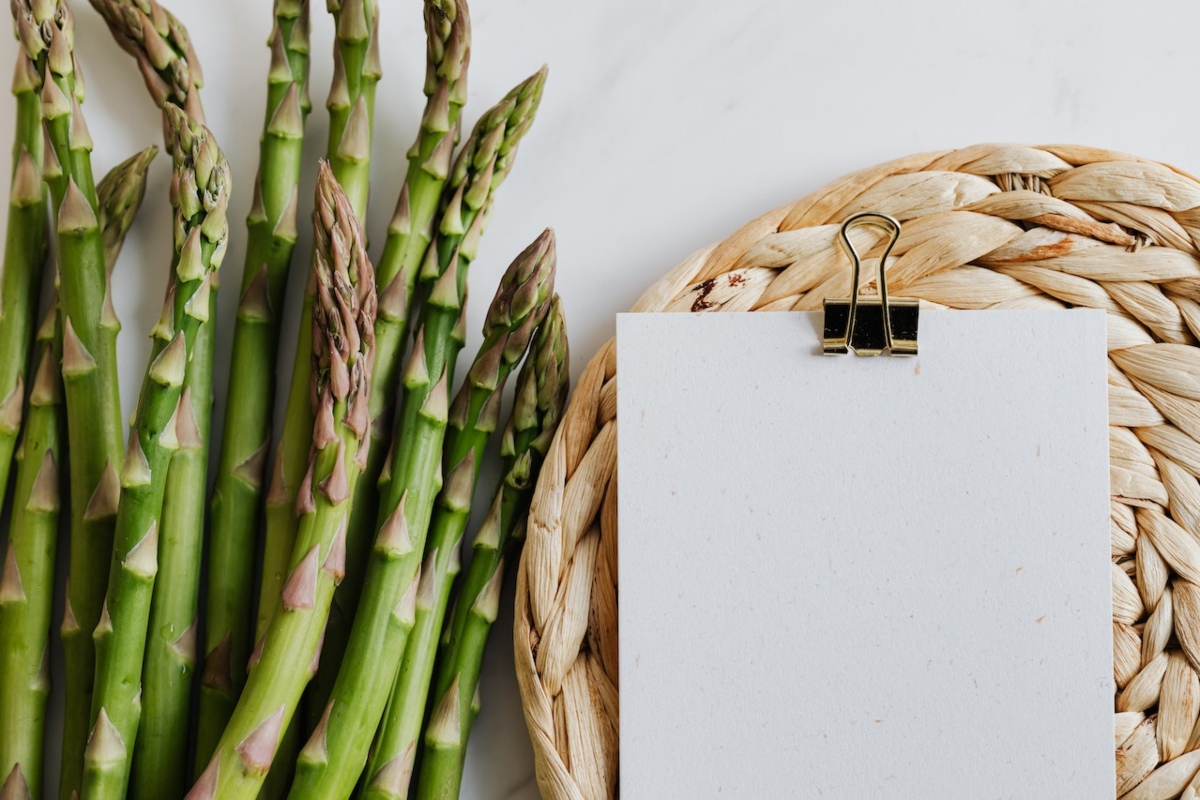In today’s world, adopting an eco-friendly lifestyle has become more than just a trend; it has become a responsibility. As we strive to reduce our carbon footprint and protect our planet, even the simplest actions, such as packing for a move, can make a significant impact. Green packing, the practice of using sustainable materials and techniques during the moving process, allows us to contribute to the environment while transitioning to a new home. And when it comes to making your move as environmentally conscious as possible, there’s no better choice than hiring the no.1 green movers NYC has to offer. Here, we will explore the importance of green packing, provide essential tips on packing sustainably, and present the ultimate green packing checklist for your NYC move. By the end, you’ll be equipped with the knowledge and tools to make your move seamless and eco-friendly.

Unveiling the power of green packing
Green packing matters for several reasons – primarily due to its ability to lower environmental impact and encourage sustainability. By opting for eco-friendly packing methods, we can minimize waste and carbon emissions related to the moving process. Choosing reusable and recyclable packing materials helps decrease the amount of non-biodegradable waste in landfills. Additionally, by conserving natural resources through sustainable packing practices, we can minimize the extraction and shortage of raw materials.
Furthermore, green packing contributes to a healthier environment. Using eco-friendly materials reduces our exposure to harmful chemicals and pollutants. Sustainable packing methods also help conserve energy. Moreover, by embracing green packing, we become sustainability advocates. Our choices inspire others to adopt eco-friendly practices, creating a boomerang effect of positive change. By demonstrating the benefits and ease of green packing, we encourage a shift towards more environmentally conscious behaviors in the moving industry and beyond. Together, we can make a significant impact on the health and well-being of our planet.
Steps to green packing
There are numerous ways to pack green and make your move more environmentally friendly. Here is a green packing checklist that encompasses various green packing strategies:
- Downsizing and donating: Start by sorting through your belongings and identifying items you no longer need or use. Donate or sell these unwanted items, giving them a new life and preventing unnecessary waste.
- Obtain reusable and recyclable packing supplies: Instead of traditional bubble wrap, choose eco-friendly alternatives such as biodegradable packing peanuts or air pillows made from recycled materials. Next, opt for recycled cardboard boxes and packing paper to pack your belongings. Lastly, consider using blankets, towels, or clothing as padding instead of purchasing additional materials.
- Use green packing supplies: Look for biodegradable packing peanuts made from sustainable materials. Use plant-based packing tapes, which are biodegradable and compostable.
Remember, when sourcing moving supplies NYC companies offer, choose eco-friendly options that align with your green packing goals.

The ultimate room-by-room green packing checklist
To ensure a smooth and eco-friendly move, it is crucial to plan ahead. By organizing and preparing, you can minimize last-minute stress and make conscious choices for a sustainable packing process. Therefore, consider the following steps. First, create a detailed timeline. Start planning your move well in advance, allowing plenty of time to complete each task. However, break down the process into smaller, manageable steps and set realistic deadlines. Consider factors such as lease expiration, utility transfers, and scheduling movers, including last minute movers NYC has if needed. Next, estimate the packing materials needed. Assess your belongings and decide the number and sizes of boxes required. Optimize packing efficiency by grouping items together based on size, weight, and fragility. Avoid over-purchasing packing materials to minimize waste. After doing all this, start packing room by room.
Living room
Proper disposal of electronics: Ensure responsible removal of electronic devices by researching e-waste recycling programs in your area. You can finish this by contacting local recycling centers or electronic retailers offering recycling services to dispose of old or non-functional electronics properly. Consider donating functional electronics to local charities, schools, or community organizations. When it comes to furniture, use the following green alternatives:
- Instead of plastic or bubble wrap, opt for eco-friendly alternatives like furniture blankets or reusable moving pads made from recycled materials.
- Use old newspapers or recycled packing paper to wrap smaller furniture pieces or delicate surfaces to protect during the move.
- If you must disassemble furniture, keep all the hardware in reusable bags or containers to prevent loss and ensure easy reassembly.
Kitchen
Instead of bubble wrap, consider wrapping fragile items in soft, reusable materials such as kitchen towels or cloth napkins. Use biodegradable or compostable packing materials, such as shredded paper or packing peanuts made from natural materials like cornstarch. When it comes to environmentally friendly packing for appliances, you can implement the following. Use blankets or towels to provide padding and protection for appliances instead of excessive plastic or foam. If you have the original packaging for your appliances, reuse it.
Bathroom
Opt for refillable or reusable containers for your toiletries instead of single-use travel-sized products. Pack toiletries in a separate reusable toiletry bag or case to minimize waste and keep them organized during the move. Most importantly, pay attention to the safe disposal of expired or unused products:
- Check the expiration dates of your bathroom products.
- Research local recycling programs for bathroom products, such as plastic containers or aerosol cans, to ensure they are recycled appropriately.
- If you have unused or unopened products in good condition, consider donating them to local shelters or organizations that accept toiletry donations.

Follow our green packing checklist and ensure an eco-friendly move
Green packing plays a vital role in reducing our carbon footprint during the relocation. By decluttering and donating, opting for sustainable packing materials, and utilizing eco-friendly supplies, we can significantly impact the environment. Planning ahead, estimating packing materials, and following a room-by-room green packing checklist ensures a seamless and eco-friendly move. For specialized items like pianos, piano movers NYC companies provide can handle the task with care. Thus, embrace green packing to contribute to a greener future while moving efficiently.
